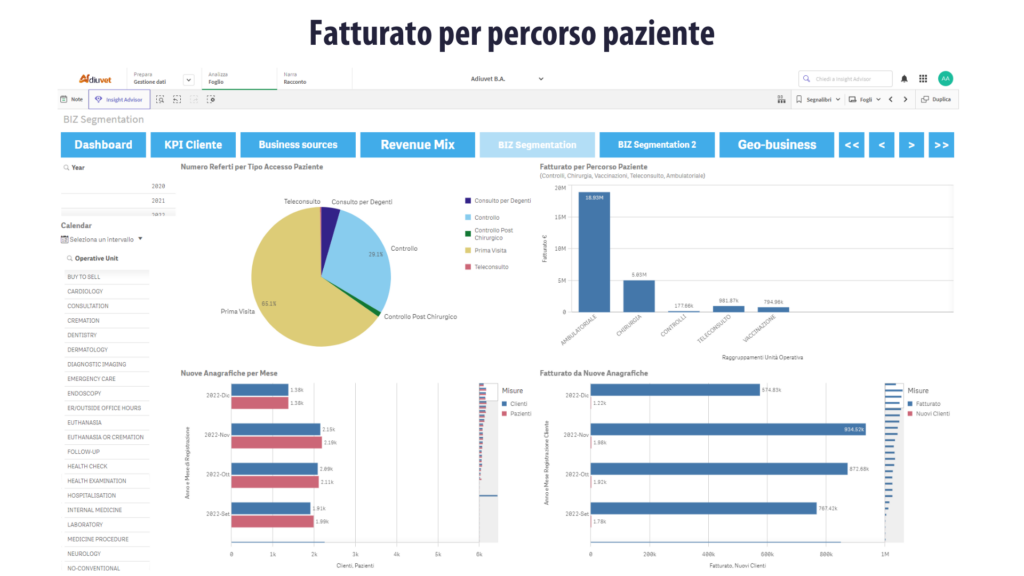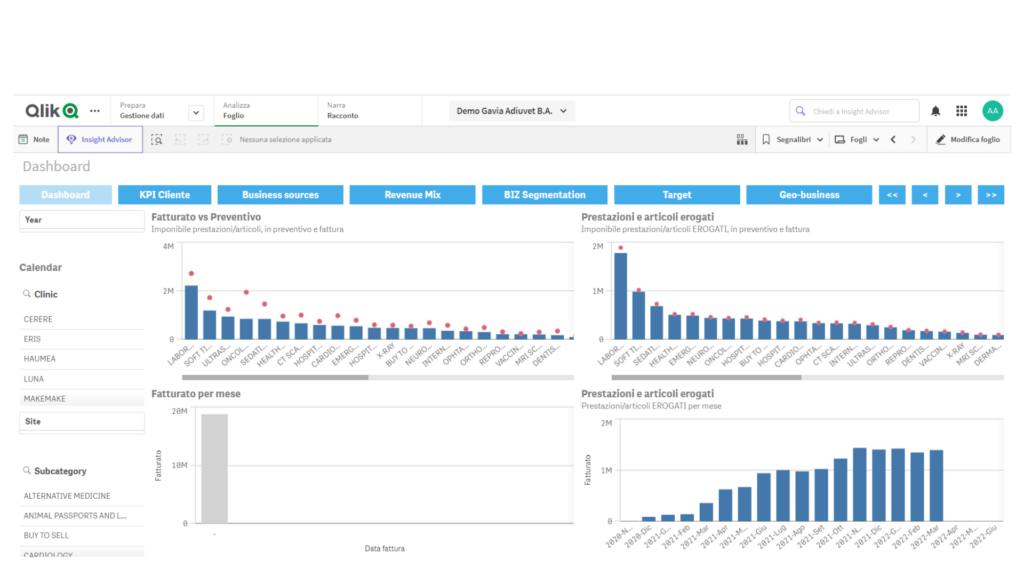
How to get more clients with SEO for veterinarians
What do you need SEO for if you are a veterinarian? Simple: attract traffic and turn it into paying customers! Learn how to optimize the structure and content of your website. … Read More

Sommario
Toggle[Important note: this article has been automatically translated from the original Italian language.]
It may seem strange to you to combine a concept as technological as the BI (Business Intelligence) to the world of veterinary medicine, yet AI (Artificial Intelligence) e ML (Machine Learning) have pervaded our work and communication tools to the extent that we can use them to Improve the economic performance of clinics And the way we care for patients.
The application of BI to epidemiological studies in veterinary public health is already an established reality.
Today we look at how to put it at the service of management through integration with good veterinary management software.
The Business Intelligence is an analytical tool that helps vets make the best strategic and managerial decisions.
Most of the analyses that common practice management systems (or PMSs) allow are descriptive analyses, that is, reports of something that has already happened and cannot be changed.
One example is revenue analysis: you can find out how much revenue is to date, but if you wanted to know what channels it comes from or how much revenue is generated by a particular service (or family of services), you would have to generate more reports and then try to put the pieces together on a third-party tool (Excel is the most commonly used).
BI creates connections and generates new meanings, allowing you to go beyond the sterile reading of a set of numbers.
What would you think of a tool that, in one screen, would allow you to link all of your clinic’s data (revenue, services, user types, care pathways), do really detailed analysis e give you the answers you’re looking for?
A tool for Business Intelligence allows you with ease to relate more information, uncover otherwise hidden meanings, identify new KPIS useful for make the best decisions for your clinic, for example:

Integrating BI among the tools available to the veterinary management, allows you to:
All these activities can be very complicated if you do not have a veterinary management system that integrates BI.
Adiuvet is the management software for veterinarians that integrates BI in an extremely simple way, without the need to recruit software engineers and data scientists, or to build some sophisticated IT structure within your clinic.
Whole management works in the cloud, freeing you from the burdens associated with IT management of the system.
The integrated BI tool (Qlik) allows you to Create endless relationships among your clinic’s data, as well as drawing on external sources (e.g., by locating a dog and feline registry database in your region, you could see all that data directly in your analysis tool). In addition, with their assistance, you have opportunities to learn how to use the instrument and master it to the fullest.

One of the most interesting functions is to link theTurnover Analysis to different entities/attributes through different areas:
TIP
if the turnover is often too different from the quote you need to check how the quote is presented to the client by that staff member, or if that staff member always enters quotes that are too high.
Did you know that a single reminder inside the management system can increase your turnover by 3%? If you remind your staff to book a follow-up visit directly, after a surgery, you will see an increase in this activity.
The most exciting aspect is that all these reports are not separated from each other: from any entry point you can deepen your analysis and create reports that were previously unimaginable.
So potentially you can get all the answers you need in an extremely intuitive way.
The answers already exist, you just have to ask the right questions!
Related articles

What do you need SEO for if you are a veterinarian? Simple: attract traffic and turn it into paying customers! Learn how to optimize the structure and content of your website. … Read More

Let’s find out what a veterinary blog is really for, why people like it, and how it can bring you new clients. Here are 3 strategies you absolutely must know! … Read More

How long does it take you to arrange a surgery? How long does it take your staff to make a visit? How many drugs do you let expire?
If you can’t answer these questions, you are missing an important growth opportunity for your veterinary facility because you are not understanding where you can improve. … Read More
We are redirecting you to the cart to finalize the requested subscription change.
Lorem ipsum dolor sit amet, consectetur adipiscing elit. Ut elit tellus, luctus nec ullamcorper mattis, pulvinar dapibus leo. Lorem ipsum dolor sit amet, consectetur adipiscing elit. Ut elit tellus, luctus nec ullamcorper mattis, pulvinar dapibus leo.